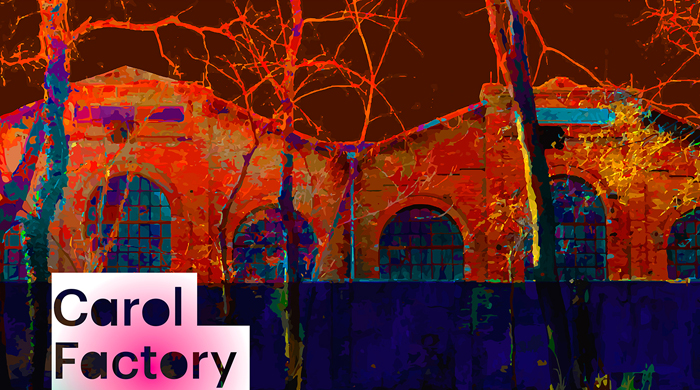“Carol Factory” represents a methodology of conversion: the old industrial areas with historical value of the Hesper Factory were transformed into a cultural and event centre, through a project initiated by Zeppelin and Eurodite.
Short history
The first railway station in Bucharest, Filaret, was inaugurated in 1869. E. Wolff Factory moved opposite the train station in 1887, in order to expand its mechanical and metallurgical industrial activities. During the communist regime, it was called “Red Star” and the production focused on heavy machinery for construction and hydraulic equipment. Now, known as “Hesper”, the factory still produces pumps and engines, although faced with a major reduction in the number of employees – from 2,000 to 200 in the last 15 years – and is struggling with the degradation of historical buildings that are no longer used. Filaret train station was also turned in a bus station for domestic routes.
The factory is very close to Carol Park (opened later, in 1906), on a hill that has always been a place for recreation for the people of Bucharest.
How to build on the original DNA
In recent years, real estate developers have made numerous offers to buy the old buildings, which, however, the owner of “Hesper” factory turned down, realizing their historical importance, the fact that they represent the spirit of industrial pioneering in the 19th century, and they still tell those old stories; also, some of them were still functional.
The main project objectives are: putting a stop to the degradation of historical buildings and preserving their value, finding new uses for the empty buildings (without disturbing production activities that still take place in the modern halls), opening access points to the park and the street, and the transformation into a publicly accessible space. It is essential to keep in touch with the DNA of the place – “manufacturing and creation” – and a local pride about production. A better approach, step by step, is to start with small investments and short-term planning, to generate cash flow for the following investments. The latter would reintegrate long-term ownership in the urban fabric: Carol factory will become one of the favourite meeting venues in Bucharest, a new urban centre for creative industries, culture and events.
Creative factories
In 2011, Zeppelin magazine organized a guided tour of industrial architecture, in little-known sites in the capital, an event that gave rise to many questions. How can we preserve old buildings and their history, at the same time integrating them in the urban landscape? Can they can be transformed into creative centres, stimulating cultural activities? How to organize and manage the process?
In order to find answers and concrete mechanisms of transformation, Zeppelin and Eurodite initiated the project “Creative Factories Bucharest.” The Dutch experts presented examples from the Netherlands and shared their experiences at one of the “Zeppelin evenings”conferences, themed Creative Factories. As a case study for Bucharest, Hesper factory was chosen, whose owner was interested in conversion, not in demolition. Hesper offered the opportunity to further analyse the potential rehabilitation of Bucharest and find approaches to transformation, in the Romanian context. During a two-day seminar, possible redevelopment scenarios have been discussed by a team of Romanian and Dutch experts, together with the factory owner.
Strategy
“Do not demolish, transform,” is what both the project team and the owner want. But how to set in motion the transformation process?
It all started with a careful process of building mutual trust with the presentation of “organic growth” and “temporary use” models and presenting concepts and numbers for the factory owner. A list of tasks has been compiled, so that first they could make the place clean and safe. This was the magical trigger that set the transformation in motion, and the factory staff began the repairs and overhauling. These minimum interventions allowed the gradual and strategic opening to the public.
In May 2014 the conversion project Carol factory had a sneak peek opening during Romanian Design Week, with over 2,000 visitors for the Carol Factory Night event. There was a growing inflow of concerts, screenings, performances and special events that gradually established the place as a hotspot in the capital.


